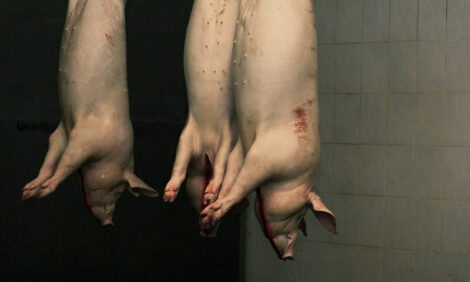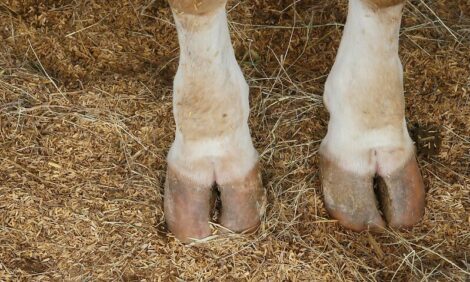



Don’t forget biocontainment of disease when following biosecurity plans
The latest disease outbreaks fueled by new disease variants are good reminders that the best biosecurity plans must include strategies to keep disease contained within a barn as well as ways to prevent new disease outbreaks.“We have to remember it’s not only bio-exclusion where we don’t want to bring in new, harmful disease onto a farm, but we also want to make sure that we contain diseases, so we are not transmitting it throughout the area or to any other barns within the system,” reported Erin Kettelkamp, DVM, Swine Vet Center.
“We have to worry about all the different movements that go on around the farm,” she explained. “Ultimately, we want to minimize any type of exposure rate. The fewer movement of either people, pigs or supplies, the better.”
Audits necessary
With fall arriving, Kettelkamp recommends hog farms conduct audits to make sure biosecurity plans cover all necessary areas and are being followed correctly.
“This time of year, it’s a good idea to have either a system’s audit or a veterinarian do an audit,” she said. “It gives another set of eyes on the farm to evaluate if we are doing what we say we are when following processes or make improvements.”
The audits should be conducted at least annually by a veterinarian or quarterly by an impartial employee or a veterinarian.
“We can’t always assume our procedures are being completed as we had them written down on paper,” she explained. “That’s why auditing all these processes is important.”
Kettelkamp conducts a variety of biosecurity audits ranging from a general farm audits to specific audits like truck washes and filtration systems. She offered strategies for making biosecurity plans stronger.
Control supply entry
Supply orders for the farm should be coordinated to reduce the number of deliveries to a farm. Instead of multiple deliveries in a week, supply orders are minimized to a couple a month.
For other types of supplies and equipment, the best strategy is dedicating the items to a specific farm.
“It is something like moving weigh scales or bringing in any other type of supplies such as those we plan to use on the farm for sampling,” she said. “Cost is a big concern. But if there is any way to have all these items dedicated to each site that’s good.”
If these items must be moved between farms, cleaning and disinfecting methods must be followed every single time.
“Other things to think about on farms is if they are filtered,” Kettelkamp said. “Continue to assess the filters and make sure it’s an airtight space.
“If focusing on sow farms, don’t forget about protecting the health of downstream pigs. We must be aware of where we put disease-challenged pigs or where we keep clean pigs. We also should evaluate biosecurity in a similar way as a sow farm, and the same with people movements.”
Control equipment movement
Another area of biosecurity concern is manure handling.
“We want to be diligent [and not hasty] about how we handle all that equipment,” Kettelkamp said. “Make sure to sanitize and move it between farms in a biosecure way.”
Ideally, the equipment should be segregated so anything used on a farm experiencing a disease outbreak is not then used on a clean farm. If this isn’t possible, then the focus should be on cleaning and sanitizing with downtime before the equipment is moved to other farms.
Similar rules also apply to feed mill trucks and other contractors entering the farm, like a service crew. Make sure a biosecurity audit covers all these activities, as well.
Truck washes
Kettelkamp has performed truck-wash audits that include environmental sampling to look for pathogen transfer.
“For truck washes, it’s best to use high-pressure and hot water as well as a large volume to remove the manure,” sha said. “It’s important to follow-up by applying a disinfectant to the entire surface of the truck.
“Common areas missed are ceilings on any decking in the trailer and tight corners in hard-to-reach areas. Keeping truck cabs clean, whether vacuuming or using disinfectants also shouldn’t be ignored.”
Kettelkamp also has seen problems with load-out chutes on farms. These areas need disinfecting.
While people errors continue to be a major cause of biosecurity breaches, audits will help reduce those slip-ups.
“Make sure audits are in place and we do what we say we are doing and pick up on any area of improvement before we have a disease outbreak,” she said.
“Biosecurity audits are tedious, and they should be. It’s a good thing to be careful.”






